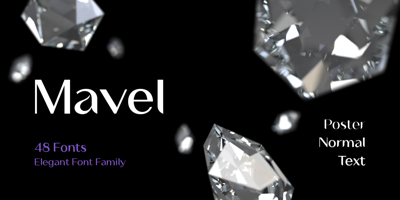Best Fonts for Luxury Branding: Crafting Elegance and Exclusivity Through Typography
Luxury branding demands a delicate balance of sophistication, exclusivity, and timeless appeal. Typography serves as the silent ambassador of luxury, communicating premium quality and elevated status before customers even engage with your products or services. The right font choice can instantly convey heritage, craftsmanship, and exclusivity, while the wrong selection can undermine even the most expensive marketing campaign. Understanding how to leverage typography for luxury positioning is essential for brands seeking to command premium pricing and cultivate devoted clientele.
The Psychology of Luxury Typography
Luxury typography operates on principles of perception psychology, where visual cues trigger immediate associations with quality, prestige, and desirability. High-end consumers expect visual sophistication that reflects their aspirational lifestyle and validates their purchasing decisions. This creates specific typographic requirements that differ significantly from mass-market branding approaches.
Luxury fonts must communicate heritage and craftsmanship through their letterforms. Whether drawing from centuries-old calligraphic traditions or showcasing cutting-edge contemporary design, luxury typography should suggest meticulous attention to detail and uncompromising quality standards. The visual weight and spacing of characters can convey precision and refinement, while unique stylistic elements create memorable brand signatures.
Exclusivity is another crucial psychological factor. Luxury brands benefit from typography that feels distinctive and rare, avoiding fonts that appear commonplace or overused. This exclusivity extends to technical execution, where perfect spacing, alignment, and proportion become non-negotiable elements that separate luxury brands from their competitors.
Classic Serif Fonts for Timeless Luxury
Serif fonts embody the heritage and tradition that luxury consumers associate with established quality and craftsmanship. These typefaces draw authority from centuries of typographic evolution, creating immediate connections to luxury's historical foundations.
Didot represents the pinnacle of neoclassical elegance, with its high contrast between thick and thin strokes creating dramatic visual impact. Originally designed in the late 18th century, Didot communicates French sophistication and has been embraced by luxury fashion houses seeking to convey both heritage and contemporary relevance. Its sharp serifs and precise geometry project confidence and uncompromising standards.
Bodoni offers similar high-contrast characteristics with distinctly Italian flair. This font's mathematical precision and dramatic stroke variation create powerful headlines while maintaining exceptional readability. Luxury brands in fashion, jewelry, and automotive industries frequently choose Bodoni for its ability to command attention while suggesting meticulous craftsmanship.
Trajan draws inspiration from ancient Roman inscriptions, providing gravitas and timeless authority. This all-caps font works exceptionally well for luxury brands emphasizing heritage, craftsmanship, and enduring value. Its classical proportions and stone-carved origins communicate permanence and significance.
Optima bridges classical and contemporary sensibilities through its unique approach to serif design. While technically sans-serif, Optima's flared strokes suggest classical letterforms while maintaining modern clarity. This makes it perfect for luxury brands seeking traditional elegance with contemporary accessibility.
Caslon brings warm humanity to luxury typography through its subtle irregularities and organic character. Unlike more geometric alternatives, Caslon's hand-crafted appearance suggests artisanal quality and personal attention, making it ideal for luxury brands emphasizing human craftsmanship and individual service.
Contemporary Sans-Serif Options for Modern Luxury
Modern luxury increasingly embraces minimalist aesthetics that communicate sophistication through restraint rather than ornamentation. Contemporary sans-serif fonts can convey luxury through perfect proportions, subtle details, and impeccable execution.
Helvetica in its various weights represents the ultimate in refined simplicity. While seemingly basic, Helvetica's perfect proportions and neutral character allow luxury brands to communicate confidence without distraction. Many high-end Swiss watch manufacturers and German automotive brands leverage Helvetica's precision and clarity.
Futura embodies geometric perfection and forward-thinking design philosophy. Its clean lines and perfect circles communicate innovation and precision, making it suitable for luxury technology brands and contemporary fashion houses seeking to project modernity and sophistication.
Avenir offers geometric principles softened by humanist touches, creating approachable luxury that doesn't intimidate. This font works particularly well for luxury service brands seeking to communicate exclusivity while maintaining warmth and accessibility.
Proxima Nova provides contemporary elegance through its balanced proportions and extensive weight range. Its slightly condensed character creates efficient use of space while maintaining luxury appeal, making it suitable for digital luxury applications and contemporary branding.
Script and Calligraphic Fonts for Personal Luxury
Script fonts add human artistry and exclusivity to luxury branding, suggesting handcrafted quality and personal attention. These fonts work particularly well for luxury brands emphasizing individual service, artisanal production, or heritage craftsmanship.
Snell Roundhand captures the elegance of formal English penmanship, creating immediate associations with luxury stationery and exclusive invitations. This font's flowing strokes and perfect rhythm suggest grace and refinement, making it ideal for luxury hospitality and personal services.
Edwardian Script embodies turn-of-the-century sophistication with its elaborate flourishes and dramatic contrasts. This font communicates old-world luxury and established heritage, working well for luxury brands with strong historical narratives.
Zapfino represents contemporary calligraphic artistry with its flowing connections and elegant variations. This font's organic character suggests handcrafted exclusivity while maintaining modern relevance, perfect for luxury brands emphasizing artisanal quality.
Bickham Script combines formal penmanship traditions with contemporary refinement. Its consistent rhythm and elegant proportions create sophisticated luxury appeal without excessive ornamentation, suitable for brands seeking refined script character.
Display Fonts for Distinctive Luxury Statements
Display fonts serve luxury brands by creating memorable headlines and distinctive brand signatures that capture attention while maintaining sophisticated appeal. These fonts often incorporate unique stylistic elements that set brands apart from competitors.
Copperplate Gothic delivers authoritative presence through its condensed, all-caps design. This font's industrial precision and strong character make it suitable for luxury brands emphasizing strength, reliability, and uncompromising standards.
Bank Gothic combines Art Deco inspiration with contemporary relevance, creating sophisticated luxury appeal with historical depth. Its geometric character and distinctive proportions work well for luxury brands with strong architectural or design heritage.
Engravers Gothic suggests traditional luxury craftsmanship through its condensed proportions and precise character. This font's association with formal engraving and premium printing makes it ideal for luxury brands emphasizing traditional production methods.
Typography Strategies for Luxury Brand Implementation
Establish Clear Hierarchies using contrasting font weights and styles to guide reader attention while maintaining sophisticated appeal. Luxury brands often benefit from pairing elegant serif headlines with clean sans-serif body text, creating visual interest without compromising readability.
Embrace White Space as a luxury signifier that communicates confidence and exclusivity. Generous spacing around text elements suggests abundance and careful curation, reinforcing premium positioning through visual restraint.
Maintain Consistent Quality across all applications, from business cards to billboards. Luxury brands cannot afford typographic inconsistencies that might suggest careless execution or cost-cutting measures.
Consider Cultural Context when selecting fonts for international luxury markets. Typography that suggests luxury in Western markets might not translate effectively to Asian or Middle Eastern audiences, requiring careful adaptation while maintaining brand integrity.
Technical Considerations for Luxury Typography
Font Licensing becomes crucial for luxury brands that often require extensive usage rights across multiple applications and territories. Ensure proper licensing for all intended uses, including packaging, digital applications, and merchandise.
Print Quality demands premium font rendering that maintains crisp edges and perfect spacing across various printing methods. Luxury brands often require custom font adjustments for specific printing applications.
Digital Optimization ensures luxury fonts maintain their sophisticated appearance across different devices and screen resolutions. Poor digital rendering can undermine luxury positioning by suggesting technical carelessness.
Custom Modifications allow luxury brands to create truly exclusive typography through subtle adjustments to existing fonts or complete custom font development. This investment in typographic uniqueness reinforces brand exclusivity.
Color and Typography Integration
Metallic Applications require fonts that maintain elegance when rendered in gold, silver, or other premium finishes. Some fonts lose their sophistication when applied in metallic colors, requiring careful testing and potential modifications.
Contrast Management ensures luxury typography remains readable while maintaining dramatic visual impact. High-contrast color combinations must preserve font character while creating appropriate luxury aesthetics.
Background Compatibility allows luxury fonts to work effectively across various background treatments, from rich textures to minimal white space, maintaining consistent luxury appeal.
Future Trends in Luxury Typography
Variable Fonts offer luxury brands unprecedented control over typographic expression while maintaining file efficiency. This technology allows subtle adjustments that can enhance luxury appeal without requiring multiple font files.
Cultural Fusion represents growing trends toward incorporating diverse typographic traditions into luxury branding, creating unique signatures that appeal to global luxury audiences while respecting local aesthetic preferences.
Sustainable Typography reflects increasing luxury consumer interest in environmental responsibility, leading to font choices that communicate both sophistication and ecological consciousness.
Conclusion
Luxury typography requires careful balance between tradition and innovation, sophistication and accessibility, distinctiveness and timeless appeal. The best luxury fonts communicate premium quality through their inherent character while providing flexibility for diverse brand applications.
Success in luxury typography depends on understanding your audience's aspirations, cultural context, and quality expectations. Whether embracing classical serif elegance, contemporary minimalist precision, or distinctive script artistry, luxury brands must maintain unwavering attention to typographic quality and consistency.
The investment in exceptional typography pays dividends through enhanced brand perception, stronger emotional connections, and the ability to command premium pricing that reflects true luxury positioning.



